THE BIRTH OF WATERCOLOUR
Watercolour (from French aquarelle, from Italian acquarello, from Latin aqua – water) is a paint made of vegetable glue, diluted with water, and it is also a style of painting with these paints.
The first mention of the generally accepted modern term "watercolour" is found in Cennino Cennini's “Treatise of Painting” (1437), the main point in the described process was the dissolution of paint in water containing vegetable glue - gummi. However, watercolour-like techniques existed before and had different names and applications.
The history of water techniques goes back thousands of years. Ancient Egyptian papyri with colourful images and hieroglyphs were made in paints with water-soluble plant resins, and this is a clear sign of watercolour technique. Ink painting on thin rice paper or silk has deep traditions in China and Japan. Initially, the Chinese style was borrowed by Japanese artists in the XIV century, and by the end of the XV century it had become the main direction of painting in Japan. The ancient tradition was characterized by the use of dense, opaque gouache watercolour, which was developed in Byzantine book art, which reached its height in the XI century. With the adoption of Christianity, the book tradition of Byzantium spreads and develops in the culture of European nations.
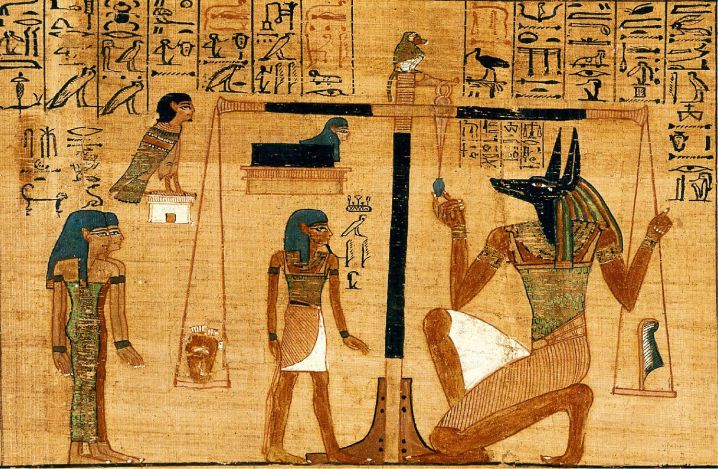
ANUBIS WEIGHING A HEART AGAINST MAAT'S FEATHER OF TRUTH.
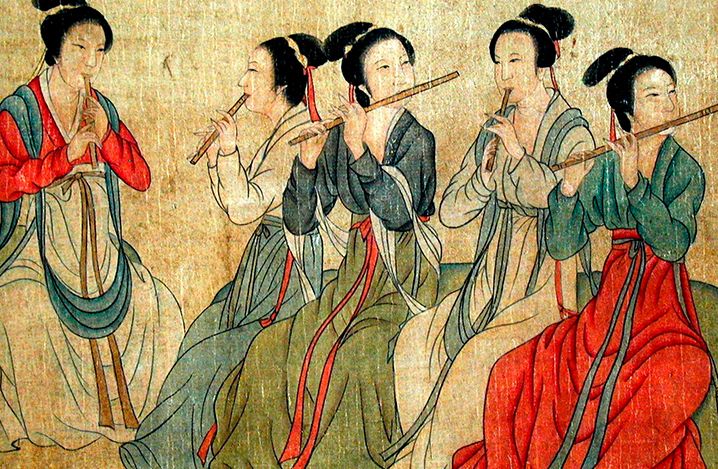
NIGHT REVELS OF HAN XIZAI (韩熙载夜宴图)

RUSSIAN PRIMARY CHRONICLE
3 MAIN EPOCHS CAN BE DISTINGUISHED IN THE HISTORY OF THE DEVELOPMENT OF MODERN WATERCOLOUR PAINTING:
Until XV century.
Colouring. Church manuscripts, chronicles.
XV - the end of XVIII century.
The first steps to independence. From Dürer to Turner.
XIX-XXI century.
An independent type of fine art. From Turner to White.
UNTIL THE XV CENTURY. COLOURING. CHURCH MANUSCRIPTS, CHRONICLES.
XV - THE END OF THE XVIII CENTURY. THE FIRST STEPS TO INDEPENDENCE. FROM DURER TO TURNER.
With the development of paper production in Europe, genuine transparent watercolour gets a chance from artists as a material for drawings and sketches. At the end of the XV and the beginning of the XVI centuries, Renaissance artists made drawings and sketches of future paintings on paper. Thanks to paper, examples of the use of watercolour as an independent kind of the fine art appear.
An excellent illustration of what was said is the work of Albrecht Dürer (1471-1528), who can be considered the ancestor of watercolour technique in Europe. His amazing picturesque watercolour works made on parchment or paper are evidence of a returned artistic interest in nature. Previously, they made a choice in favor of images-ideograms, abandoning ancient aesthetics, considering them attributes of paganism.
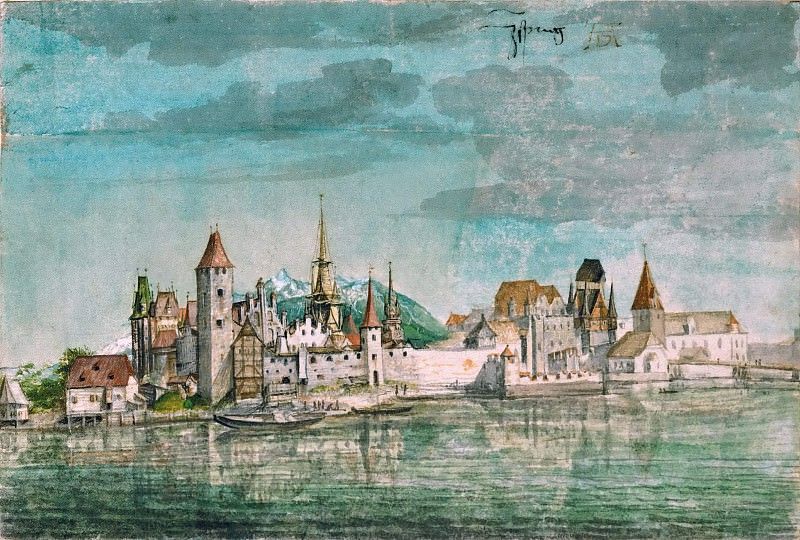
Albrecht Durer, View of Innsbruck
(1495)
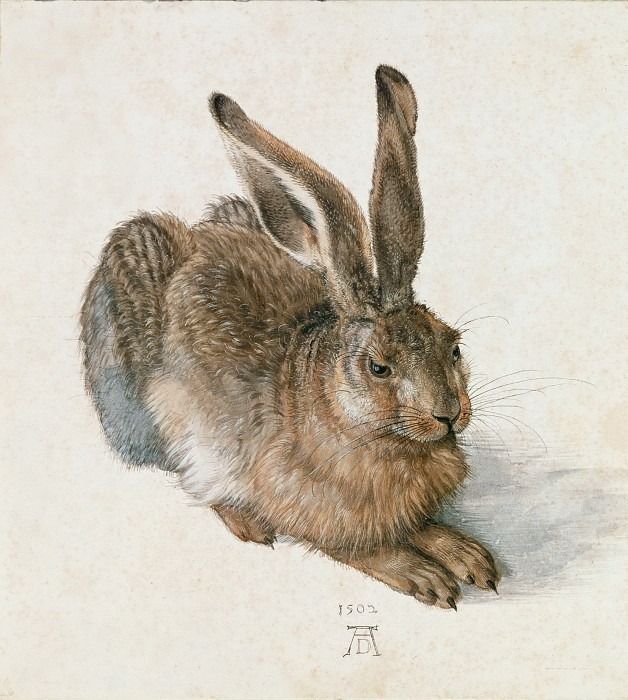
Albrecht Durer, The Hare (1502)

Albrecht Durer, The Large Piece of Turf (1503)
Meanwhile, in southern Europe, in Italy, the main technique of painting is gradually being formed - multi-layer glazing, washing and working out forms with small strokes with a small water content on dry paper. This technique of painting was called classical watercolour, or the Italian manner of painting.
This technique of painting was used in all European art academies, and the principle of painting with watercolour was essentially little different from the then existing glazing technique in oil painting.
In the XVIII-XIX centuries, participants in scientific and military expeditions widely used watercolour technique using weakened contours and brush feathering to sketch archaeological and geological objects, plants, animals and landscape sketches. The improvement of techniques for visualizing topographic plans, namely the replacement of sharply noticeable contours with a pen for feathering with a brush, was the reason for the birth of watercolour as an independent kind of painting. Soon, many of the skilled painters proved with their works that the opportunities of watercolour allow you to perform independent paintings and its role may be more interesting than the role of material for quick sketches and sketches, as was previously customary. Many began to note the superiority of watercolour painting to oil in solving the problems of transmitting transparency, as well as delicacy in performing small details.
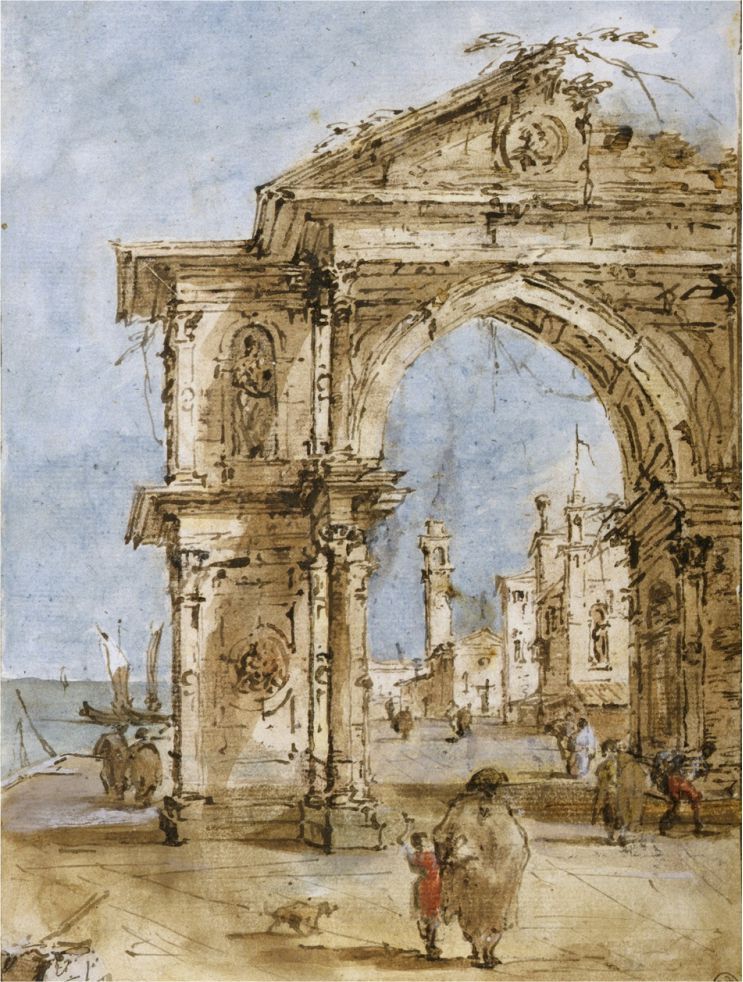
Guardi Francesco, Venetian landscape with the Arc de Triomphe (1712–1793)
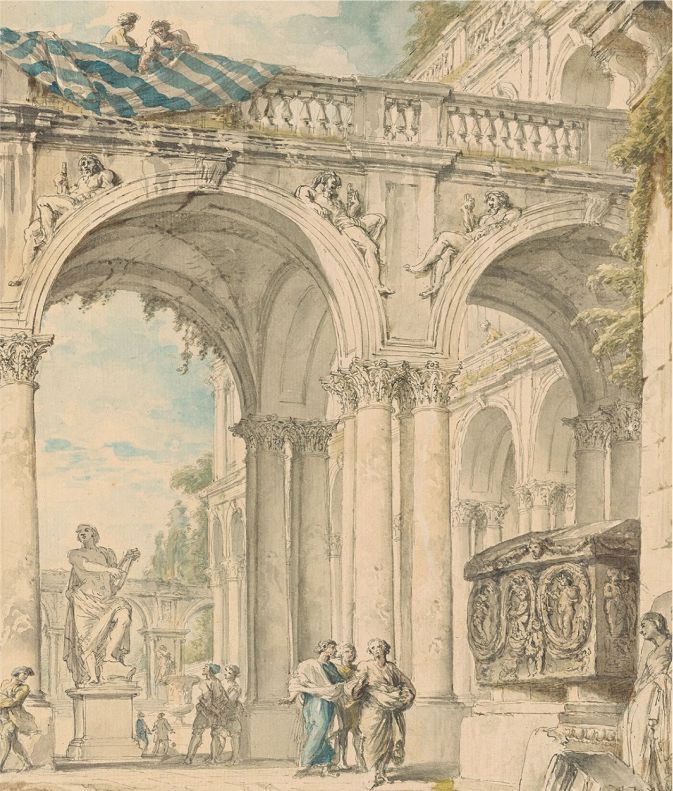
Gian Paolo Panini, Arcade with Sarcophagus, 18th century
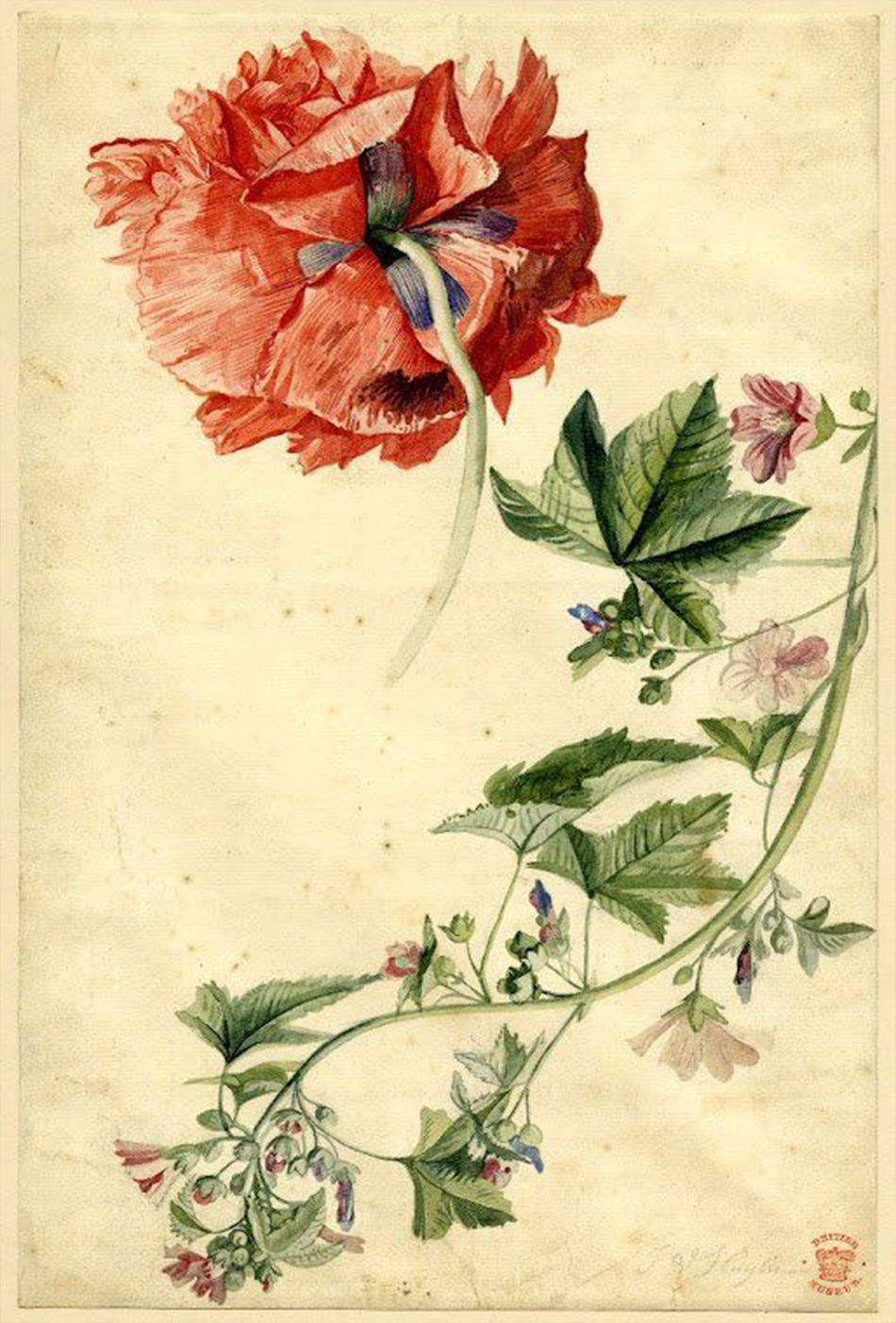
Jan van Huysum Botanical artwork (1682–1749)
The usual course of history began to change in the late XVII - early XVIII centuries, when the industrial revolution began. This was a time of rapid development of technologies and industries, the widespread replacement of manual labor by machine one. For manufacturers, the main goal was to reduce the cost of the production process, which sometimes led to a loss of quality of the final product. So, many expensive materials began to be replaced by cheaper, but less high-quality analogues.
In the development of watercolour painting, two factors played a large role, the first of which was the improvement of the recipe for the manufacture of watercolour paints, and the second was the tireless work of chemical scientists, which led to the emergence of new, cheaper synthetic pigments.
Paints of the epoch:
- 1704 – Berlin azure, or Prussian Blue was discovered
- 1778 - Scheelian greens were discovered; 1800 - Schweinfurt greens were discovered
- 1793 - yellow and orange chromes (chromic acid lead) were found
- 1793 - green chromium oxide (anhydrous) was discovered
- In the XVIII century, synthetic yellow, red, and brown iron oxides began to be produced
- In 1781, a new recipe for watercolour paints was patented. It has been observed that pigments mixed with honey and Arabic gum do not dry and are formable. Soon, the paints began to be poured into special molds and sold in boxes.
XIX-XXI CENTURY. AN INDEPENDENT TYPE OF FINE ART. FROM TURNER TO WHITE.
"Slowly but surely, year after year, we are moving forward. With the growth of science, infinite stories of creativity, will finally be achieved, step by step, the realization of the artist's hope for a perfect palette? " Georg Field.
Watercolour, as an independent technique in the modern sense, was formed in the XIX century - with all the important features of materials, their methods of application and painting techniques. It was then that a special category of artist appeared – watercolour artist.
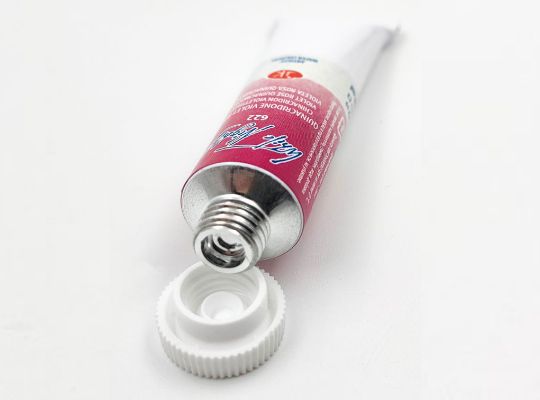
At the beginning of the XIX century, an English watercolour school was formed and a new technique of painting on raw paper appeared, it is called English watercolour. English artists used the technique of specific washing – washing off the paints to achieve the impression of faded out matte colourfulness and the complete fusion of colouristic transitions. The name of Joseph Mallord William Turner (1775-1851) became a landmark for the history of watercolour. Turner's watercolour painting went through the entire evolutionary path of development from neatly executed topographic to associative, colourful landscapes. From classical academic techniques of writing to revolutionary, innovative.
Along a special path in the XX century, the American school of watercolour developed, the difference of which was the widespread use of dry brush technique (brush work with a minimum amount of water on dry paper). Andrew Wyeth (1917-2009) applied this technique most masterly and originally, his work is a brilliant example of a realistic direction in painting, which certainly inspired many artists of our time in search of their creative style.

William Turner, Venice: San Giorgio Maggiore - Early Morning (1775-1851)

William Turner, Stonehenge (1775-1851)

Andrew White, Coming Storm, 1938
HISTORY OF THE RUSSIAN ACADEMIC SCHOOL OF WATERCOLOUR.

Karl Brullov, Olga Ferzen on a Donkey (1835)

Eduard Gau, the White Hall of the front half of Paul I. (1880)

Mikhail Vrubel, the Sea Princess (1898)

Gabriel Malysh, Autumn Fog (1907−1998)
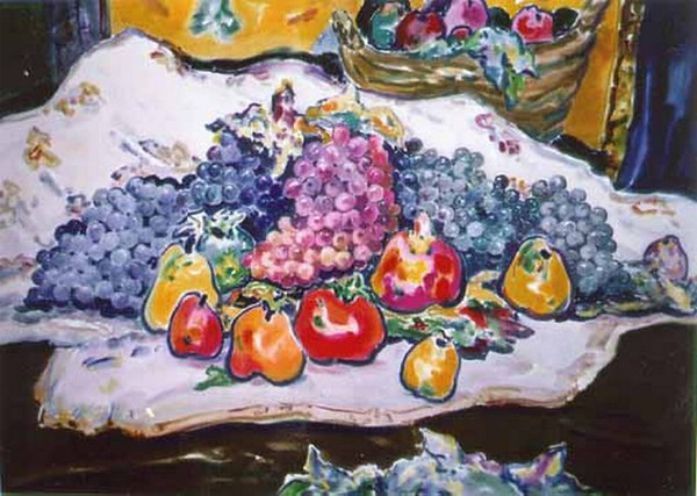
Gabriel Malysh, Still life with grapes (1907−1998)
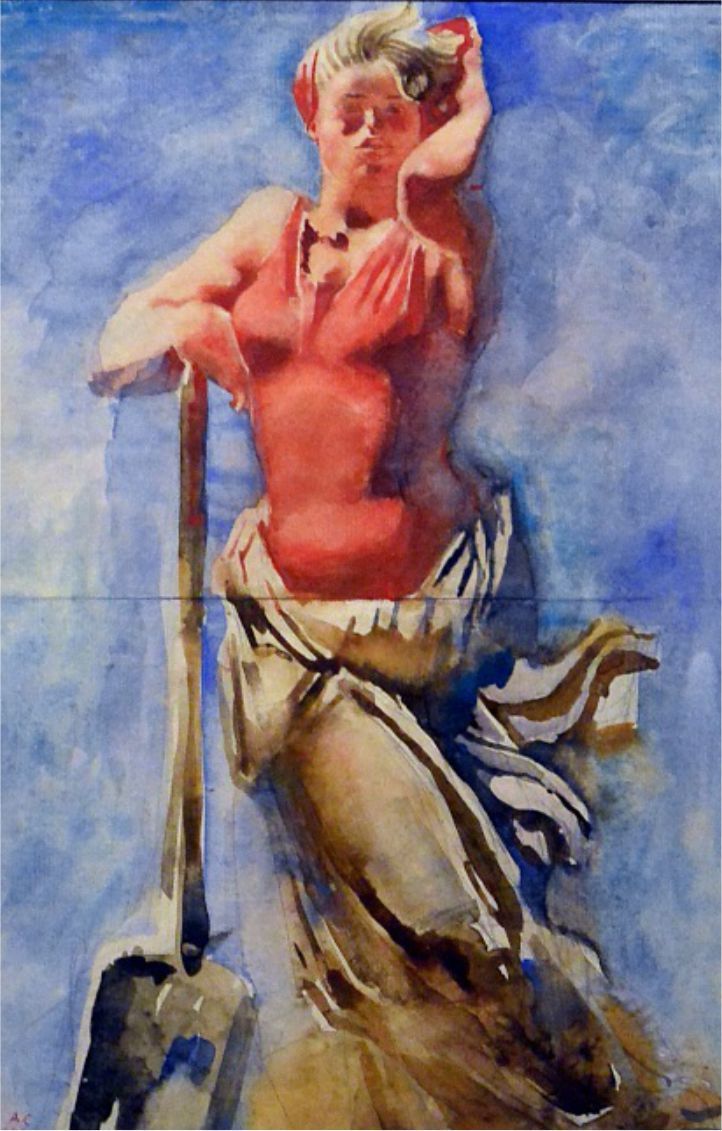
Alexander Samokhvalov, With a shovel (1894-1971)
The assertive energy of Alexander Samokhvalov's watercolours shows how freely the artist possessed both drawing and painting. Harmonious, bold composition, clear details create images of a new era. His technique is sufficiently pure and rich in colour. Gabriel Malysh's watercolours are a vivid example of wet painting techniques in one session - ala-prima. Stylistically continuing the traditions of the post-Impressionists, Gabriel Malysh painted soft and cheerful, bright in colour landscapes and still lifes.
Paints of the epoch:
- 1804 – cobalt blue is synthesized. Later, methods for producing pigment of different shades were proposed.
- 1817 – metal cadmium and its coloured compounds were discovered.
- 1827 – a method of producing artificial ultramarine was discovered.
- 1856 – aniline purple was obtained
- 1859 –the first durable, beautiful, non-poisonous green paint – emerald green was successfully obtained
- 1868 - a method for producing alizarin from anthracite was found
- 1880 - a method for producing artificial indigo was discovered
- 1935 - the first quinacridone pigments were discovered. By 1958, industrial production was established
- 1938 - quality pigments of phthalocyanine dyes group were obtained.
- In the XIX century, it was possible to synthesize cobalt, cadmium and other synthetic pigments, which reduced the cost on painting, and also were able to enrich the palettes of artists significantly.
- In 1832, glycerol was added to watercolour paints. This improved recipe became the basis for the production of modern watercolour paints for professional artists.
- In 1841, a prototype of modern tubes was patented.
With the development of chemistry at the beginning of the XVIII century and especially actively - in the second half of the XIX century, a wide variety of new colours appeared in the artist's palette. Thanks to new technologies, new pigments appear, giving new shades, and with them new opportunities, compositions of watercolour mediums are being developed.
Saturated, deep and pure colors of the modern watercolor palette create fascinating subjects. The shape and mood are outlined white bold expressive and broad strokes, the depth of shadow and the play of light are conveyed with transparent glaze. Despite the presence of small details, there is no torment in the works, they are filled with air and light.
CONCLUSION.
Nowadays, watercolour is experiencing a rise in interest and a new wave of popularity. The correct choice of modern high-quality professional materials of watercolour painting allows artists to create freely, and viewers to admire the technique of painters. The range of art watercolour colours White Nights is expanded every year thanks to the reviews and requests of the artists, new products are being developed. We carefully monitor the quality of paints and their compliance with safety criteria so that our paints continue to delight and help artists in creating unique and exciting watercolour painting.


